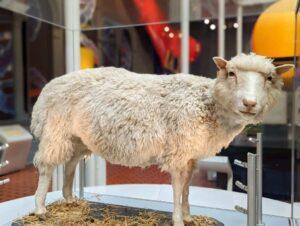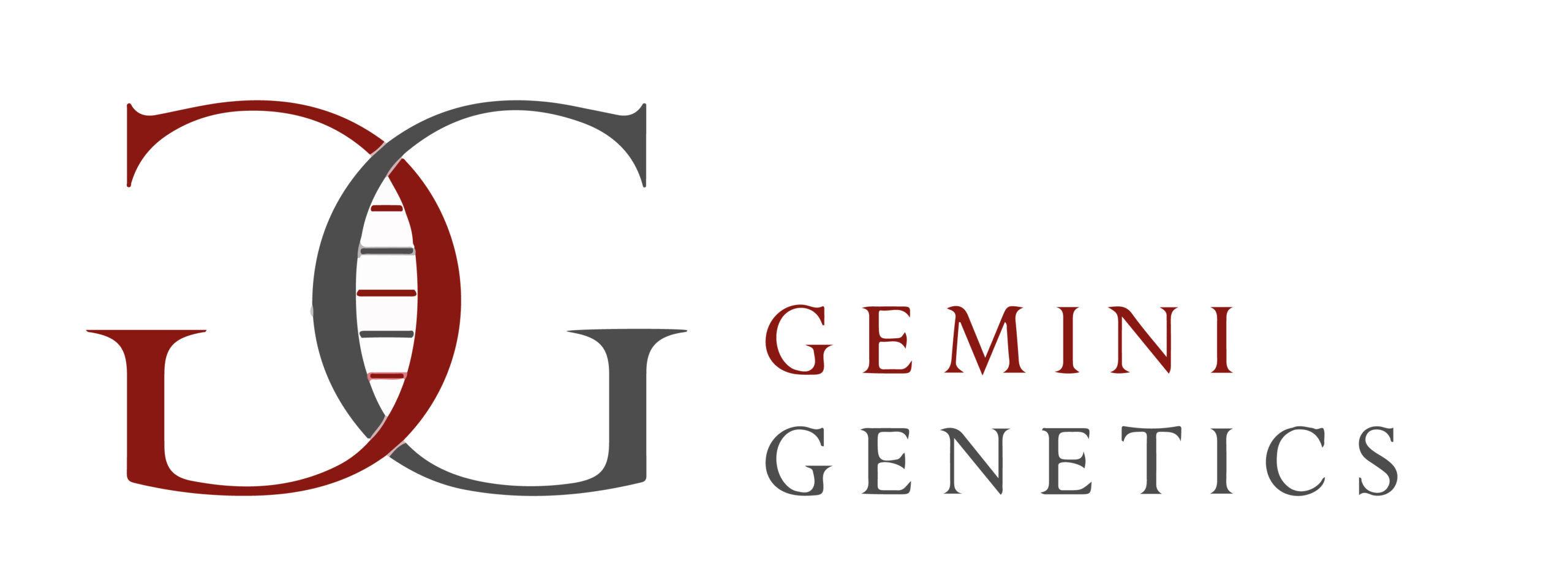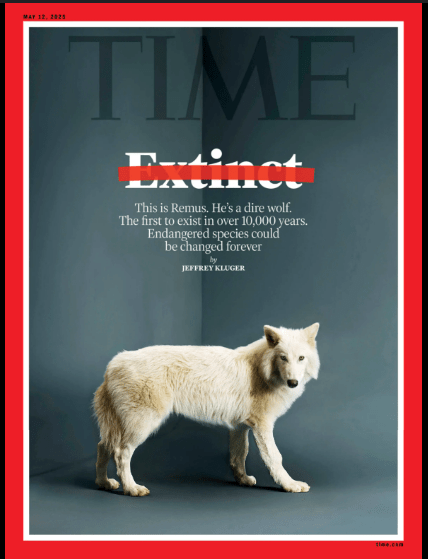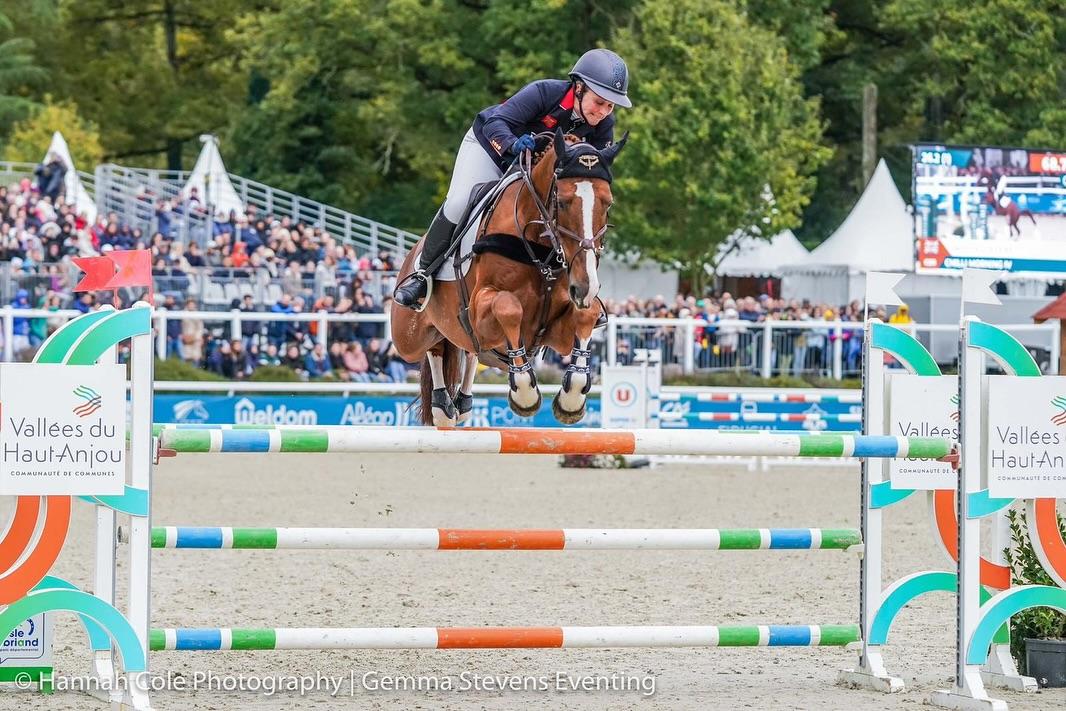Colossal Biosciences 'Resurrects' the Long-Extinct Dire Wolf: A New Era for De-Extinction and Conservation? In…
Dolly The Sheep – Pioneering The Future Of Cloning

Dolly The Sheep – Pioneering the Future of Cloning
In the annals of scientific breakthroughs, few have captured the public imagination like Dolly the Sheep. As the first mammal to be cloned from an adult somatic cell, Dolly’s birth marked a turning point in biotechnology – a step that opened doors to many advancements in genetics, medicine and agriculture.
Who Was Dolly The Sheep?
Dolly the Sheep, born on July 5th 1996 was a Finn-Dorset sheep who was the first mammal to be cloned from an adult somatic cell – in short, a cell from the body, not a reproductive cell! In Dolly’s case, it was a mammary gland cell that was used, which was the inspiration for her name, a tongue-in-cheek reference to country singer Dolly Parton. Throughout her life, Dolly gave birth to six healthy lambs – one single, one set of twins, and one set of triplets – demonstrating that cloned animals can reproduce normally. After her passing in 2003, Dolly’s remains were preserved and are now on public display at the National Museum of Scotland in Edinburgh.
How Was Dolly Created?
This scientific achievement utilised a technique called Somatic Cell Nuclear Transfer (SCNT). The first step was to harvest an unfertilised egg from a sheep and remove its nucleus, which is the cellular structure that contains an animal’s DNA. Then, the nucleus of a somatic cell, in Dolly’s case a mammary gland cell, is inserted into the enucleated egg. An electrical impulse is applied to trigger cell division which allows the cell to start its normal embryonic development. The embryo was then implanted into a surrogate ewe who carried the pregnancy to term and a few months later, Dolly was born!
Where Was Dolly The Sheep Born?
All the work on Dolly took place at the Roslin Institute, part of the University of Edinburgh. She spent her life at Roslin, living a normal life apart from the occasional media appearance among fellow sheep. The work was done under the expert leadership of embryologist Ian Wilmut and cell biologist Keith Campbell, with crucial collaboration from Edinburgh-based biotechnology company PPL Therapeutics.
Why Was Dolly The Sheep Created?
Dolly was part of a research project at the Roslin Institute to produce genetically modified animals by introducing new genes into livestock. The goal was to create sheep capable of producing a human protein used to help treat lung conditions such as cystic fibrosis in their milk. Scientists wanted this new trait that the sheep displayed to be passed on to their offspring and further research into cloning allowed that genetic information to be passed on in full and create consistent, large-scale supplies of the protein.
What Was The Significance Of Dolly’s Creation?
Dolly’s birth proved that the nucleus of a specialised adult cell retained all of the genetic information that is necessary to produce an entire organism, contrary to prior beliefs in biology. Before the breakthrough that Dolly brought to the scientific field, clones had only ever been made from embryonic or foetal cells. These kind of cells retain a property called pluripotency, which means they can differentiate and specialise into many different types of cells and have many different functions. Her creation from an adult, already fully specialised mammary cell, was the first proof that terminally differentiated cells still contained the full genetic blueprint needed to generate an entire organism.
What Is Dolly’s Legacy?
The findings brought to light by Dolly’s success inspired the discovery of Induced Pluripotent Stem Cells (iPSCs) and Shinya Yamanaka‘s work which endeavoured to reprogram adult human cells to a pluripotent stem cell-like state which allowed for the offering of personalised therapies without the ethical concerns of embryonic cells.
In agriculture, Somatic Cell Nuclear Transfer (SCNT) has been used to propagate elite livestock genetics, while in conservation it holds potential for rescuing endangered species.
In the years following Dolly, this technology has been used to clone over 30 mammalian species, advancing models for research as well as conservation technologies. Today, research focuses more on therapeutic cloning: creating patient-matched stem cells for regenerative medicine, underscoring how Dolly’s legacy continues to shape the frontier of biomedical innovation.
The birth of Dolly the Sheep also marked the pioneering of pet cloning as it is available today to domestic animal owners of cats, dogs and horses to carry on the genetic legacy of a much loved animal companion. Since the days of Dolly’s cloning, the technology behind cloning has been consistently optimised. Mammary gland tissue is no longer used, instead skin samples are the preferred sample types. At Gemini Genetics, we are partnered with ViaGen Pets in the US, who carry the world leading status for domestic animal cloning. Their experience in this field spanning over 20 years.
At Gemini Genetics for our genetic preservation for future cloning services, we typically use small 6mm skin biopsy punch samples from the body as well as a minimum 2cm x 2cm area of the ear for post-mortem sample taking. You can find out more about our sample taking instructions on our Emergency Cat & Dog Cloning Instructions or Emergency Horse Cloning Instructions pages.
Find out more about Ian Wilmut, the scientist behind Dolly the Sheep here.
Find out more about how you can preserve your pet’s genetics for future cloning here.
Contact us for more information by email at info@geminigenetics.com or at 01948 668 057/ 07710 778 016.



